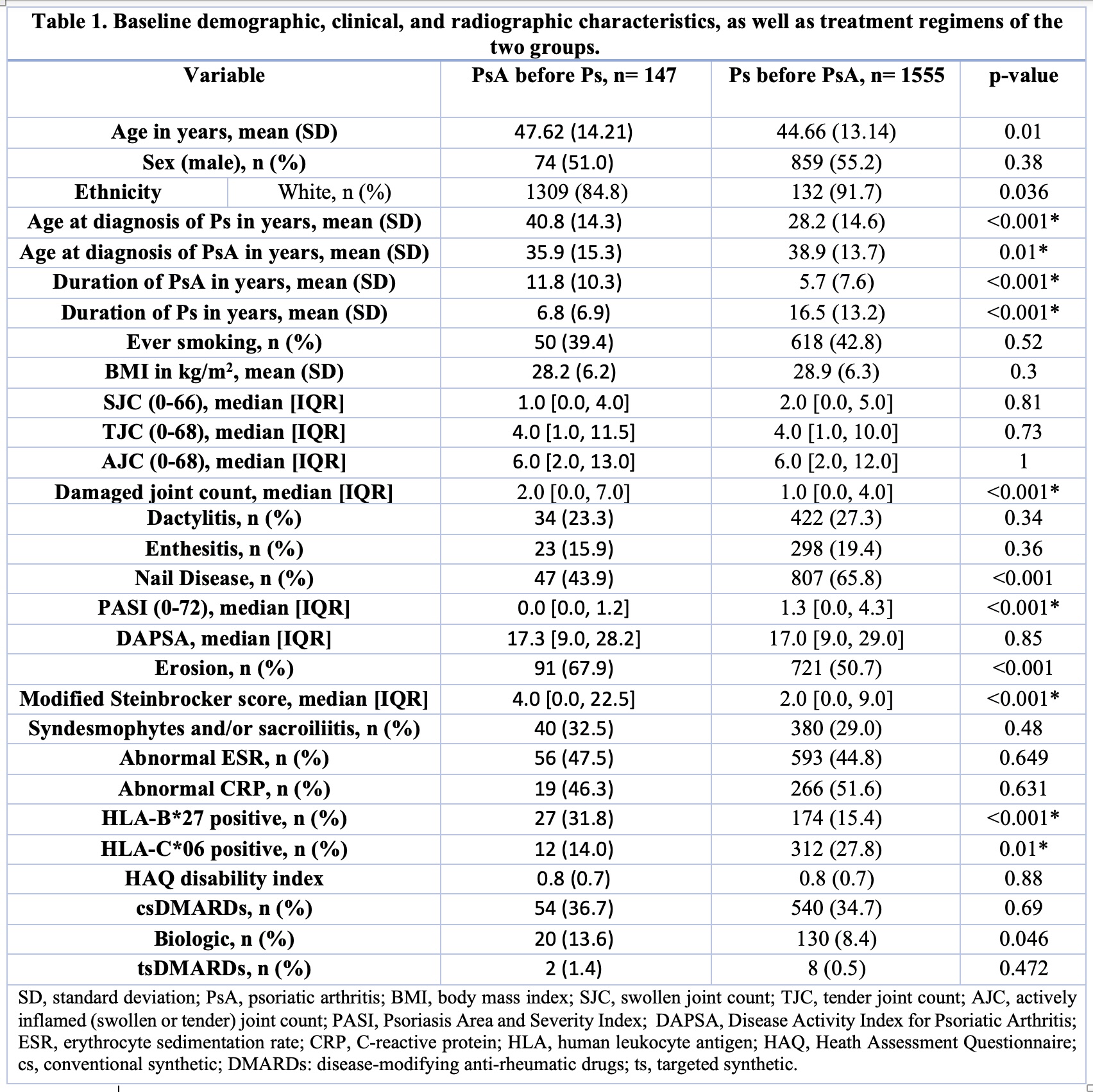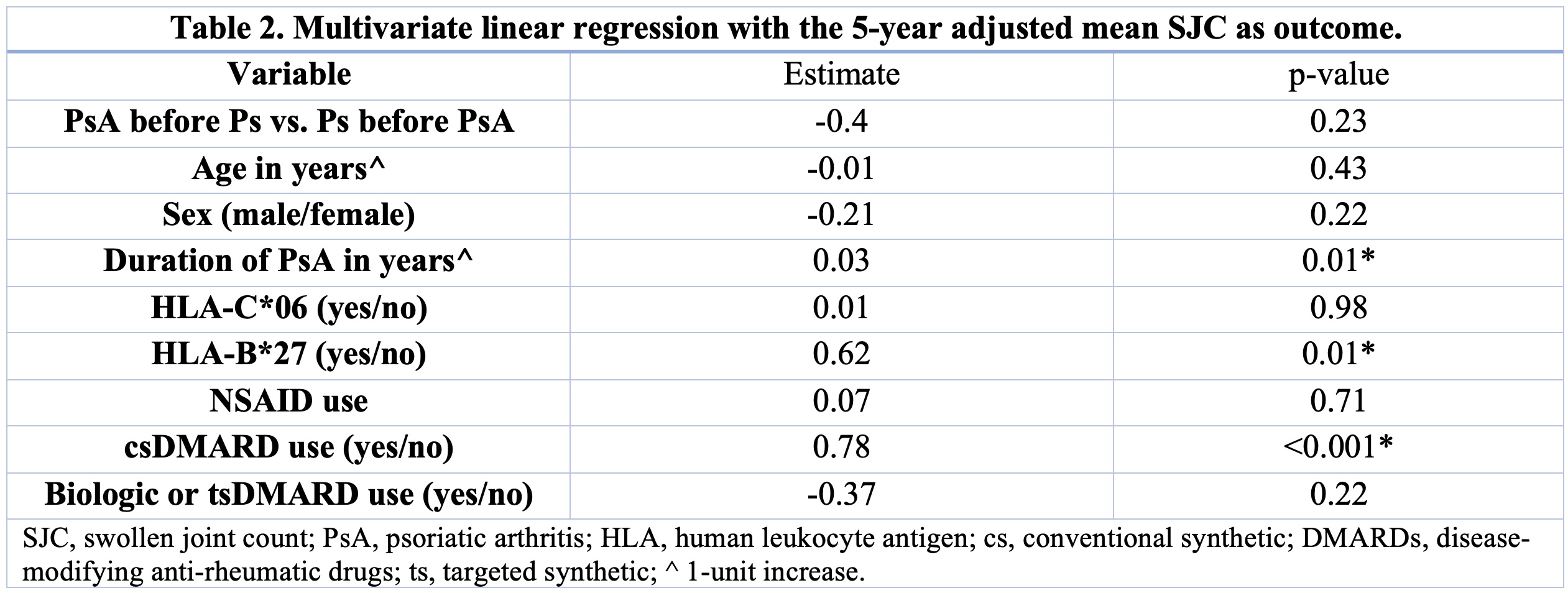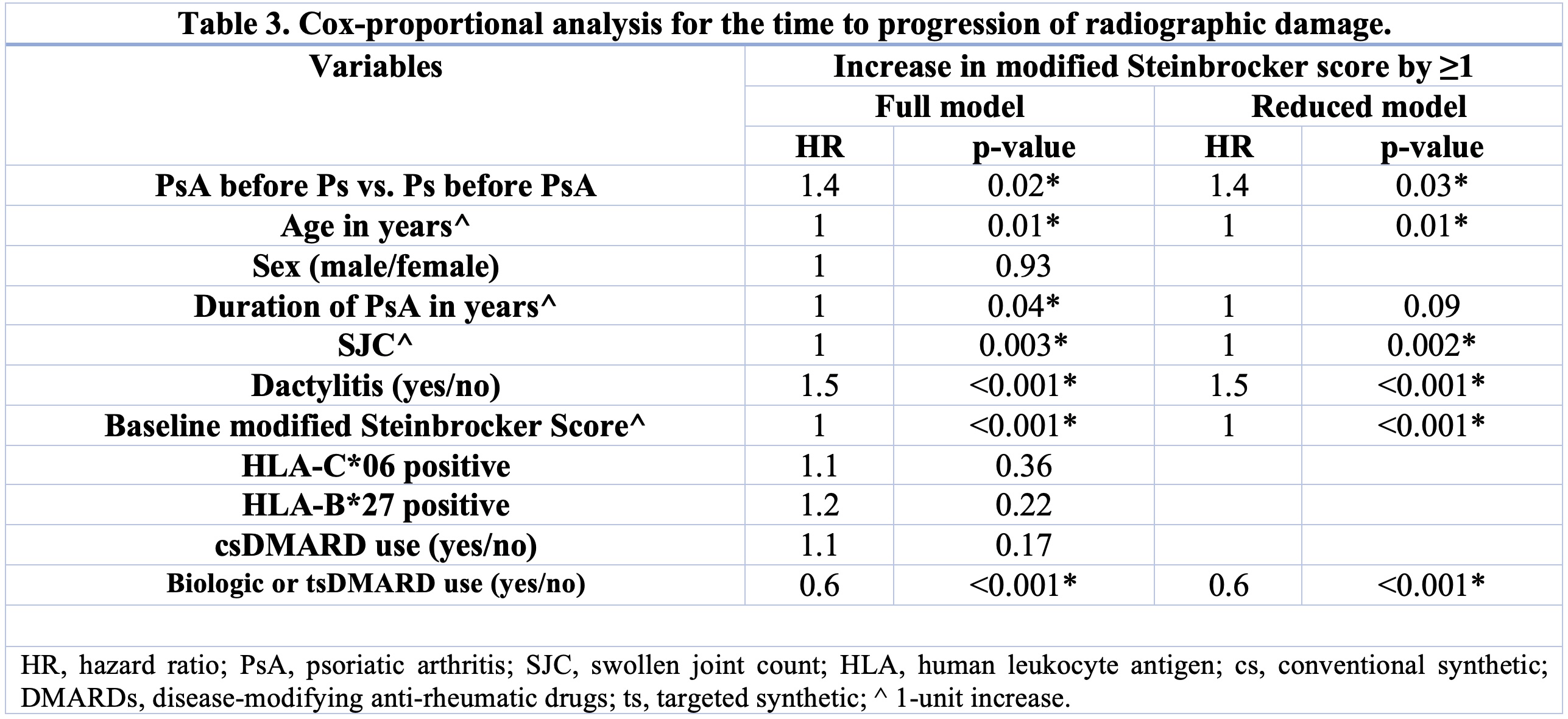Session Information
Date: Monday, November 18, 2024
Title: SpA Including PsA – Diagnosis, Manifestations, & Outcomes Poster III
Session Type: Poster Session C
Session Time: 10:30AM-12:30PM
Background/Purpose: Most patients with Psoriatic Arthritis (PsA) experience psoriasis (Ps) before the onset of arthritis. However, in about 15% of the cases, the skin and joint manifestations occur simultaneously, and in 7-20% arthritis precedes the skin psoriasis. We aimed to evaluate the differences in demographic characteristics and the impact on disease activity and structural damage in patients who develop PsA before Ps versus those diagnosed with Ps before PsA.
Methods: We included PsA patients from our prospective observational cohort and classified them into two groups based on the onset sequence: those who had PsA before Ps and those who developed Ps before PsA. Patients diagnosed with both psoriasis and PsA within the same year were included in the latter group. We compared baseline demographic and disease-related characteristics between the groups. Multivariate linear regression was used for the 5-year adjusted mean swollen joint count (SJC) and cox proportional hazards analysis for time to radiographic progression was conducted to explore the association between PsA before Ps group with disease activity and damage, respectively compared to Ps before PsA group.
Results: Of the 1702 patients included in the study, 147 (8.6%) developed PsA before Ps. Regarding the baseline characteristics, nail disease and psoriasis area and severity index (PASI) were more prevalent in the Ps before PsA group compared to the other group. The modified Steinbrocker score was significantly higher in patients who developed PsA before Ps, and erosions were more frequent in the same group. Additionally, HLA-B*27 positivity was more common and HLA-C*06 positivity less common in the PsA before Ps group (Table 1).
There was no significant difference between the two groups in the 5-year adjusted mean SJC (estimate -0.40, p= 0.23). However, longer duration of psoriasis, HLA-B*27 positivity and the use of csDMARDs were associated with higher disease activity (Table 2).
PsA before Ps patients showed a hazard ratio (HR) of 1.43 (p=0.023), indicating a significant association with faster progression of radiographic damage. Patients with older age, increased SJC, and a higher baseline modified Steinbrocker score showed a significant association with radiographic progression, as well as the presence of dactylitis. Use of advanced therapy was protective (HR 0.58, p < 0.001) (Table 3).
Conclusion: Only a minority of patients develop PsA before Ps. Compared to those who develop Ps before PsA, patients who develop PsA first exhibit different disease-related characteristics and experience faster progression of radiographic damage.
To cite this abstract in AMA style:
Kharouf F, Carrizo Abarza V, Gao S, Pereira D, Cook R, Chandran V, Gladman D. Do Patients That Develop PsA Before Psoriasis Have Different Disease Outcomes? [abstract]. Arthritis Rheumatol. 2024; 76 (suppl 9). https://acrabstracts.org/abstract/do-patients-that-develop-psa-before-psoriasis-have-different-disease-outcomes/. Accessed .« Back to ACR Convergence 2024
ACR Meeting Abstracts - https://acrabstracts.org/abstract/do-patients-that-develop-psa-before-psoriasis-have-different-disease-outcomes/



